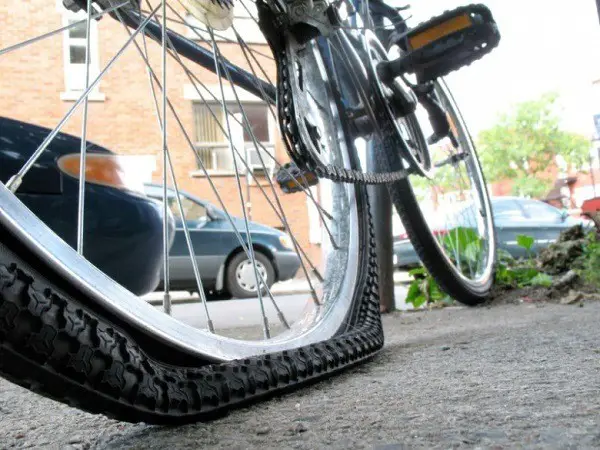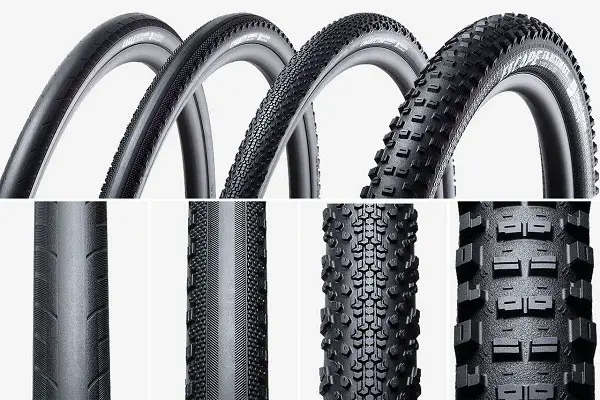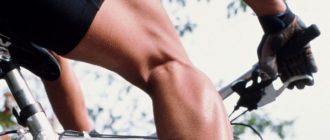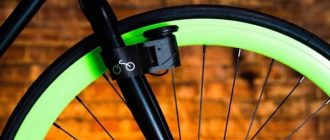Bicycle. For some, it is simply a means of getting from point A to point B. For some, it is an opportunity to travel that way. For some, it is a certain sporting discipline. In any case, it is noticed that cycling brings pleasure and gives a feeling of freedom! And for whatever purpose the bike is used, it is important to know its components and consider their characteristics for a comfortable and efficient ride. Let’s understand how to choose a camera for a bicycle, which camera is better and its main parameters.
Basic parameters of a bicycle camera
Bicycle tube – this is such a “ring” tube of rubber, which is placed under the bicycle tire on the rim in order to subsequently inflate it with air to the required pressure. The tube gives shape to the tire, while performing a shock-absorbing function while riding.
Tubes Size
One of the most important things to consider when buying a tube is the size of the tube. When you buy a camera, it is not enough to tell the salesperson that you “just want a bike tube”.
That is why it is important to know: the size of the camera should match the size of the tire, namely its diameter and width. That is, the size of the tube coincides with the size of the bicycle tire and the diameter of the wheel. But wheels come in different sizes, depending on the type of bike, the rider’s height and riding style.
For example:
- wheels that have a diameter of 20 inches are found on most children’s bikes and on bikes of the sport discipline “Bicycle Moto Extreme”(BMX);
- 24-inch wheels are suitable for teenage bikes;
- 26 inches is the most common wheel diameter on MTB (“Mountain Bikes” – mountain bikes), as well as city bikes;
- MTB bikes have also become more common with a wheel diameter of 27.5 inches;
- 28 inches can be found on hybrid models and road bikes;
- among mountain bikes is becoming popular and the so-called “Nainer“, which has a diameter of 29 inches.
Marking
How do you know what size tire on your bike? With the help of markings: the outer side of the bicycle tire reflects the parameters – rim diameter (the first indicator) and width (the second indicator). For example, a mountain bike tire might have the numbers 26-1.90 (indicated in inches) or 37-622 (indicated in millimeters) on it–that’s the diameter and width. It also indicates the pressure limit for inflation of the wheel.
Can I put a tube with parameters greater than those indicated on the tire? This is not advisable as it may cause the inner tube to “gum up”. Can I buy a smaller tire? In rare cases, if necessary, for example on a 26″ wheel, it is in principle possible to fit a 24″ camera. But the life will not be long, the camera will quickly fall into disrepair.
Types of nipples
Next, in order to choose the right camera, you need to understand what type of nipple on the bike.
A nipple is a valve on the tube; it is used to pump and deflate air, as well as block its escape after the pump is disconnected.
Consider the types of nipples (valves) now found on bicycles:
- Schrader (designation AV) is a popular and common valve, identical to a car valve. Schrader’s rim hole diameter is 8.0 to 8.5 mm. Fits on wide cams, suitable for most MTB or touring bikes. Bicycle tubes with this nipple can be inflated by a car pump, as well as almost any bicycle pump, which is very convenient in case of a puncture and lack of your own pump.
- Presta (designation FV) is a “French” nipple used on road bikes as well as on high-level mountain bikes. He has a smaller diameter hole (6 mm), so this nipple is used on narrow rims with tires not very wide. It is also lighter than the Schrader. It is enough to unscrew the nut and press the piston to bleed air from the valve.
- Dunlop nipple – now rare; previously used on Soviet bicycles. You can pump with a Presta chamber pump, despite the fact that its bore diameter is 8.5 millimeters.
By measuring the diameter of the hole in the rim, you will understand which camera with which nipple to buy.
Materials for Bicycle Cams
Depending on the purpose of cycling and the purpose of the bike, when buying a camera also takes into account the material from which it is made.
Let’s take a look at the basic materials:
- Butyl rubber – synthetic rubber, the most common material in the manufacture of bicycle tubes. Applicable for everyday riding. Optimal option, as it has a number of advantages: low cost, good wear resistance, quite reliably holds air. But not all butyl tubes are of the same quality: different manufacturers have different quality of rubber mixture, which affects the degree of puncture and wear resistance of the tube.
- Latex – this natural rubber is used to make racing bike cams. The material is lighter than butyl, much more elastic, which affects the better rolling. Disadvantages: poor air retention, rather low wear resistance and higher cost.
Expensive and cheap cams – what’s the difference
As said before, the quality of rubber affects the lifetime of the camera, so there is no point in buying the cheapest rubber (remember the saying “a miser pays twice”).
Cheap quality rubber cams, besides poor material quality, can have such problems as irregular stretching when you fill with air, mismatch of valve diameter with the hole in the rim, too deep valve position that makes it difficult to inflate the cam, the valve often comes off the cam or lets air out.
As a side note. About compatibility:
- Presta, Schrader nipples will fit most bicycle pumps;
- A rim that has a Schrader hole can be easily fitted with a Dunlop nipple.
- You can use special plastic inserts to mount a Presta nipple tube to a rim with a Schrader hole.
- Since Presta and Dunlop valves have similar threads, pumps of the same nipple types will fit their caps.
- Automotive pumps under Schrader can be used for cameras with Dunlop and Presta valves using an adapter.
Tips for choosing a cam
- Determine tire size (diameter and width).
- Depending on the purpose of the bike, choose the appropriate material.
- Do not skimp on the bike camera and do not buy the cheapest one.
- Find out which nipple fits your rim.
- When riding, it is necessary to carry a bicycle repair kit and, preferably, a spare tube. Therefore, buy two or three cycle tubes at once.
Conclusion
So, we have broken down how to choose the right bicycle camera, which camera is better. We realized that with the right camera will roll better, and the risk of punctures will be less. Over time, by purchasing cameras from different manufacturers, you will understand which one will be optimal for you in quality, durability and cost.
Remember about the necessary pressure in the camera (depending on the style of riding and the road surface) and about the availability of a spare bike camera during bike rides.
Have a great ride and a good ride!











This blog post is a great resource for anyone looking to purchase a camera for bicycle use. It provides helpful information about the different parameters and types of cameras available and gives useful advice on how to choose the best one for your needs. Thanks for sharing this informative article!